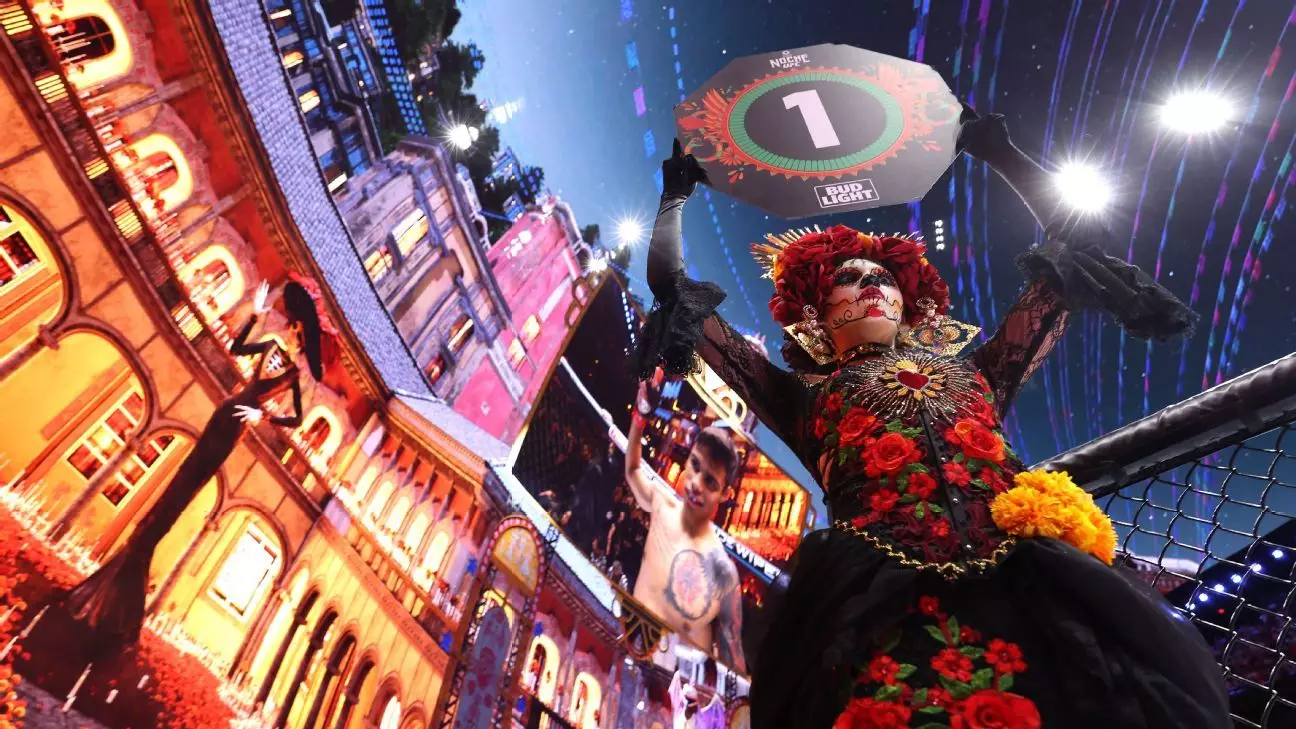The recent Noche UFC event, hosted in the groundbreaking Sphere in Las Vegas, represented not only a thrilling night of fights but also a heartfelt homage to Mexico’s rich culture and vigorous fighting spirit. UFC president Dana White recognized the significance of holding the event over the weekend of Mexican Independence Day, and skillfully interwove this cultural celebration into the fabric of the evening. The Sphere, with its imposing height of over 360 feet and an LED exterior spanning 580,000 square feet, served as a majestic backdrop, amplifying the emotional weight of the tribute.
White described the event as a “love letter to Mexico,” aimed at encapsulating the nation’s storied history and its profound impact on combat sports. In essence, the UFC was not merely presenting matches; it was curating an experience that bridged the past and future of Mexican culture through the medium of fight. The main card featured a series of cinematic presentations, each accompanied by live bouts, creating a dynamic interplay between story and sport that invited fans to engage on a deeper level.
The film, entitled “For Mexico, For All Time,” was meticulously crafted to resonate with the audience by traversing various epochs in Mexican history—from the dawn of its first civilizations to contemporary achievements. As chapters of the film unfurled within the Sphere, vibrant visuals and compelling narratives transported viewers through a storied timeline, all while world-class fighters battled it out in the Octagon.
This innovative approach to storytelling represented a synergy between cinema and live action, allowing the audience to experience the lore of Mexico while witnessing the physical embodiment of its fighting culture. Joe Sill, one of the project’s directors, highlighted the extraordinary opportunity to meld Mexico’s rich heritage with the UFC’s dynamic history, suggesting this could redefine the narrative possibilities in sporting events.
An integral part of the presentation involved the careful curation of performances, such as the stunning visual representation of Mexican rituals through Danza Azteca costumes. This homage not only highlighted the vibrant aesthetic of Aztec design but also fused it with modern storytelling, amplifying the cultural significance of the fight card. Artistic contributions from creators like Paul Nicholls transformed tradition into a contemporary spectacle, engaging both fans and newcomers with the visual richness of Mexican culture.
Thus, every aspect of the event, from stage design to performer wardrobe, was infused with meaning, ultimately aiming to honor Mexican heritage in a way that felt both monumental and accessible.
Artistic minds behind the chapters drew inspiration from renowned figures in Mexican art, such as Diego Rivera and David Alfaro Siqueiros, fostering a narrative thread that honors the sacrifices made during the struggle for independence. This dedication to historical accuracy and stylistic authenticity mirrors a broader effort to impart not only entertainment but also education. Diego Huacuja, a director involved in the project, articulated the difficulty and importance of portraying such profound cultural moments in an engaging format that resonates with contemporary audiences.
The collaborative approach adopted by a host of directors, VFX artists, and technical teams served to create a cohesive narrative that transformed the sphere into a canvas for storytelling. The sheer scale of the venue challenged creators to think outside conventional cinematic frameworks, enhancing their creative toolkit to produce a wholly immersive experience.
With the Sphere serving as a monumental canvas, the implications of this event stretch far beyond one night in Las Vegas. It sets a precedent for how sports events can serve as platforms for cultural storytelling, blending history with entertainment. Such a model could redefine how combat sports are marketed and consumed, potentially attracting a wider audience by imparting richer narratives and deeper meanings.
As the night concluded and the lights dimmed, both fighters and spectators left with a shared sense of pride—a realization that beyond the grappling and striking lay a tapestry woven from the enduring spirit and indomitable heritage of Mexico. Through events like these, the UFC may very well have found a new pathway for storytelling in sport, marrying the thrill of combat with the profound weight of culture’s narrative. The Sphere has indeed established itself as a revolutionary venue, one that the world will eagerly watch as it evolves into a landmark for future storytelling endeavors.


Leave a Reply